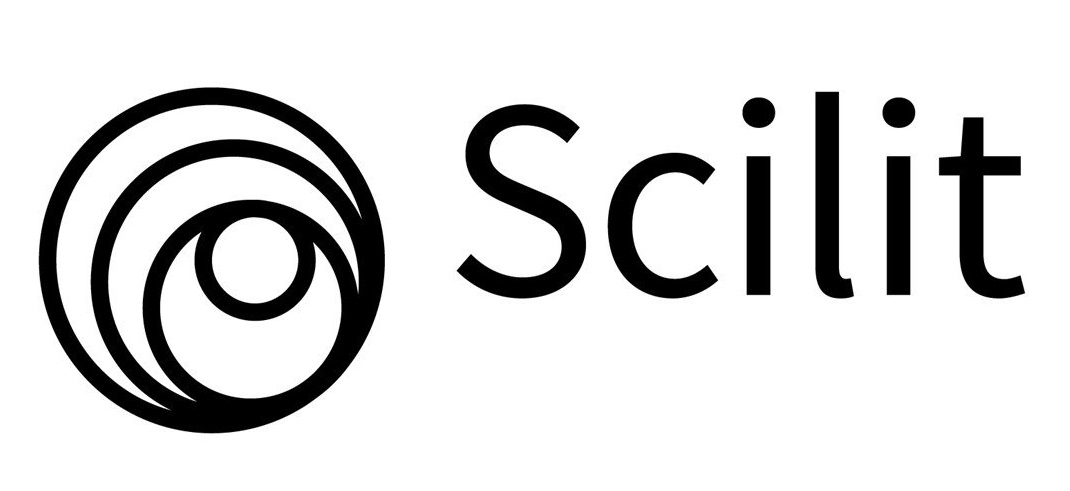فهم تأثير هلاوس الذكاء الاصطناعي على المجتمع الجامعي
DOI:
https://doi.org/10.70000/cj.2024.73.622الكلمات المفتاحية:
الذكاء الاصطناعي، الوعي المعلوماتي، هلاوس الذكاء الاصطناعيالملخص
نظرًا لأننا نعيش في عصر ثورة المعلومات، فإن العثور على معلومات موثوقة ودقيقة يستغرق وقتًا وجهدًا مما جعل الطلاب والباحثين يهدفون إلى إيجاد طريقة أسهل. توفر أدوات الذكاء الاصطناعي حلاً سهلاً للوصول إلى المعلومات المطلوبة بسهولة ويمكن الوصول إليها؛ ومع ذلك، تعتمد هذه الأدوات على مجموعات بيانات ضخمة للتنبؤ بالمخرجات المحتملة إحصائيًا، وليس الدقة المضمونة. يمكن أن يؤدي هذا إلى معلومات مضللة وأخطاء واقعية وتحيزات ومحتوى ملفق، وهو ما يسمى "الهلوسة". تركز مشكلة البحث على تحديات اكتشاف هلوسات الذكاء الاصطناعي، وهي القضية الرئيسية لجميع مستخدمي تقنيات الذكاء الاصطناعي. الهدف الرئيسي من الدراسة هو زيادة الوعي بهلوسة الذكاء الاصطناعي وتعزيز الاستخدام الأخلاقي والفعال لأدوات الذكاء الاصطناعي بين طلاب وأعضاء هيئة التدريس والموظفين بجامعة نيو جيزة. يتضمن هذا النهج لفهم التحيزات والأخطاء المرتبطة بمخرجات الذكاء الاصطناعي. من الناحية المنهجية، ستستخدم الدراسة نهجًا مختلطًا يجمع بين التحليلات الكمية لدقة أدوات الذكاء الاصطناعي وجمع البيانات النوعية من خلال استطلاع آراء المستخدمين عبر مجموعة من المجالات لجمع رؤى حول تأثير هلوسات الذكاء الاصطناعي. وتتمثل النتائج المتوقعة لهذا البحث في الكشف عن المزالق التي قد يقع فيها الباحثون عند الاعتماد على تكنولوجيا الذكاء الاصطناعي في عملهم. بالإضافة إلى ذلك، ستساهم النتائج بشكل كبير في برامج محو الأمية المعلوماتية، من خلال الدعوة إلى إدراج تقييمات أدوات الذكاء الاصطناعي ضمن منهج محو الأمية المعلوماتية الأوسع وتزويد المستخدمين بالمهارات اللازمة لتقييم المحتوى الناتج عن الذكاء الاصطناعي بشكل نقدي.
المراجع
Ahmad, M. A., Yaramis, I., & Roy, T. D. (2023). Creating trustworthy LLMs: Dealing with hallucinations in healthcare AI [arXiv preprint]. https://arxiv.org/abs/2311.01463v1
Ahn, C., & Kim, J. H. (2023). AntiHalluciNet: A potential auditing tool of the behavior of deep learning denoising models in low-dose computed tomography. Diagnostics, 14(1), 96. https://doi.org/10.3390/diagnostics14010096
Athaluri, S. A., Manthena, S. V., Kesapragada, V. S. R. K. M., Yarlagadda, V., Dave, T., & Duddumpudi, R. T. S. (2023). Exploring the boundaries of reality: Investigating the phenomenon of artificial intelligence hallucination in scientific writing through ChatGPT references. Cureus. https://doi.org/10.7759/cureus.37432
Brownlee, J. (2023, July 17). A gentle introduction to prompt engineering. Machine Learning Mastery. https://machinelearningmastery.com/a-gentle-introduction-to-prompt-engineering/
ElFangary, L. M. (2024). Roadmap for generative models redefining learning in Egyptian higher education. International Journal of Advanced Computer Science and Applications, 15(2), 144. http://www.ijacsa.thesai.org
Gao, Y., Wang, J., Lin, Z., & Sang, J. (2024). AIGCs confuse AI too: Investigating and explaining synthetic image-induced hallucinations in large vision-language models. Beijing Jiaotong University & Peng Cheng Lab.
Gold, P. (n.d.). User awareness and education for generative AI [Online course]. Coursera Instructor Network. Coursera. https://www.coursera.org/learn/user-awareness-and-education-for-generative-ai
IBM Corporation. (2024). Glossary | IBM watsonx. https://dataplatform.cloud.ibm.com/docs/content/wsj/wscommon/glossary-wx.html?context=wx#x10298036. Retrieved July 22, 2024.
Iorliam, A., & Ingio, J. A. (2024). A comparative analysis of generative artificial intelligence tools for natural language processing. Journal of Combinatorial Theories and Applications. https://doi.org/10.62411/jcta.9447
Ji, Z., Lee, N., Frieske, R., Yu, T., Su, D., Xu, Y., Ishii, E., Bang, Y., Chen, D., Dai, W., Chan, H. S., Madotto, A., & Fung, P. (2022). Survey of hallucination in natural language generation. ACM Computing Surveys, 1(1), Article. https://doi.org/10.1145/0360-0300/2022/2-ART
Kim, H., & Lee, S. W. (2024). Investigating the effects of generative-AI responses on user experience after AI hallucination. In Proceedings of the MBP 2024 Tokyo International Conference on Management & Business Practices (pp. 92-101). Social Science and Humanities Research Association (SSHRA).
Leiser, F., Eckhardt, S., Leuthe, V., Knaeble, M., Maedche, A., Schwabe, G., & Sunyaev, A. (2024). HILL: A hallucination identifier for large language models. Institute of Applied Informatics and Formal Description Methods, Karlsruhe Institute of Technology.
Maleki, N., Padmanabhan, B., & Dutta, K. (2024). AI hallucinations: A misnomer worth clarifying. arXiv. https://arxiv.org/abs/2401.06796v1
McGrath, K. (2021). Accuracy and explainability in artificial intelligence: Unpacking the terms [Short paper]. In Proceedings of the Forty-Second International Conference on Information Systems. Brunel University London.
Mozelius, P., & Humble, N. (2024). On the use of generative AI for literature reviews: An exploration of tools and techniques. In Proceedings of the 23rd European Conference on Research Methodology for Business and Management Studies (ECRM 2024). Mid Sweden University, University of Gävle, & Uppsala University.
Najjar, R. (2023, July 12). Preliminary understanding of generative AI: What & how? Medium. https://medium.com/@rachad.najjar/preliminary-understanding-of-generative-ai-what-how-7add139620b4
Perkins, M., & Roe, J. (2024). Generative AI tools in academic research: Applications and implications for qualitative and quantitative research methodologies [Preprint]. British University Vietnam.
Rawte, V., Chakraborty, S., Pathak, A., Sarkar, A., Tonmoy, S. M. T., Chadha, A., Sheth, A., & Das, A. (2023). The troubling emergence of hallucination in large language models – An extensive definition, quantification, and prescriptive remediations. AI Institute, University of South Carolina; Christ University; Islamic University of Technology; Stanford University; Amazon AI.
Rawte, V., Priya, P., Tonmoy, S. M. T., Zaman, S. M. M., Sheth, A., & Das, A. (2023). Exploring the relationship between LLM hallucinations and prompt linguistic nuances: Readability, formality, and concreteness [arXiv preprint]. https://arxiv.org/abs/2309.11064v1
Salhab, R. (2024). AI literacy across curriculum design: Investigating college instructors’ perspectives. Online Learning, 28(2), 22-47. https://doi.org/10.24059/olj.v28i2.4426
Saudi Data and Artificial Intelligence Authority. (2023, November). Generative artificial intelligence (Generative artificial intelligence series No. 1). Saudi Data and Artificial Intelligence Authority. https://sdaia.gov.sa/ar/MediaCenter/KnowledgeCenter/Pages/SDAIAPublications.aspx
Saudi Data and Artificial Intelligence Authority. (2023, November). Large Language Models (Generative artificial intelligence series No. 2). Saudi Data and Artificial Intelligence Authority. https://sdaia.gov.sa/ar/MediaCenter/KnowledgeCenter/Pages/SDAIAPublications.aspx
Shi, W. L. (2023). Efficacy of educational misinformation games [arXiv preprint]. https://arxiv.org/abs/2305.09429v1
Song, Y., He, Y., Zhao, X., Gu, H., Jiang, D., Yang, H., Fan, L., & Yang, Q. (n.d.). A Communication Theory Perspective on Prompting Engineering Methods for Large Language Models. arXiv.org. https://arxiv.org/abs/2310.18358
Zaimah, N. R., Hartanto, E. B., & Zahro, F. (2024). Acceptability and effectiveness analysis of large language models-based artificial intelligence chatbots among Arabic learners. Mantiqu Tayr: Journal of Arabic Language, 4(1).
التنزيلات
الملفات الإضافية
منشور
كيفية الاقتباس
إصدار
القسم
الرخصة
الحقوق الفكرية (c) 2024 Hend Kamel

هذا العمل مرخص بموجب Creative Commons Attribution 4.0 International License.










